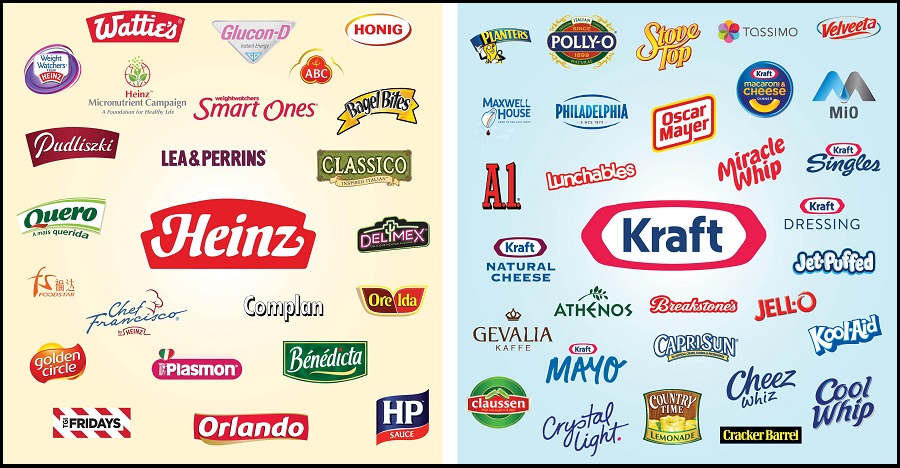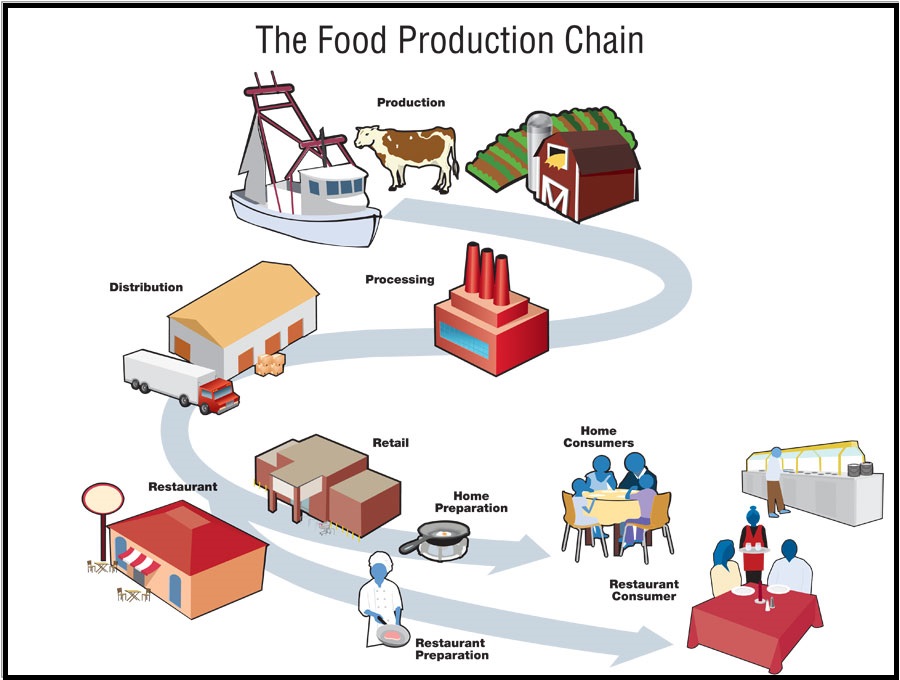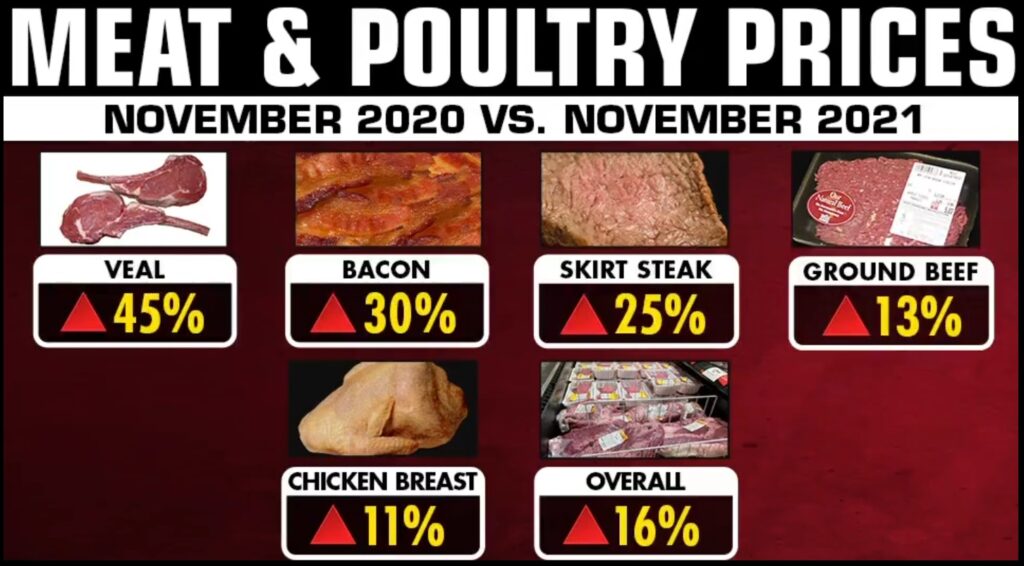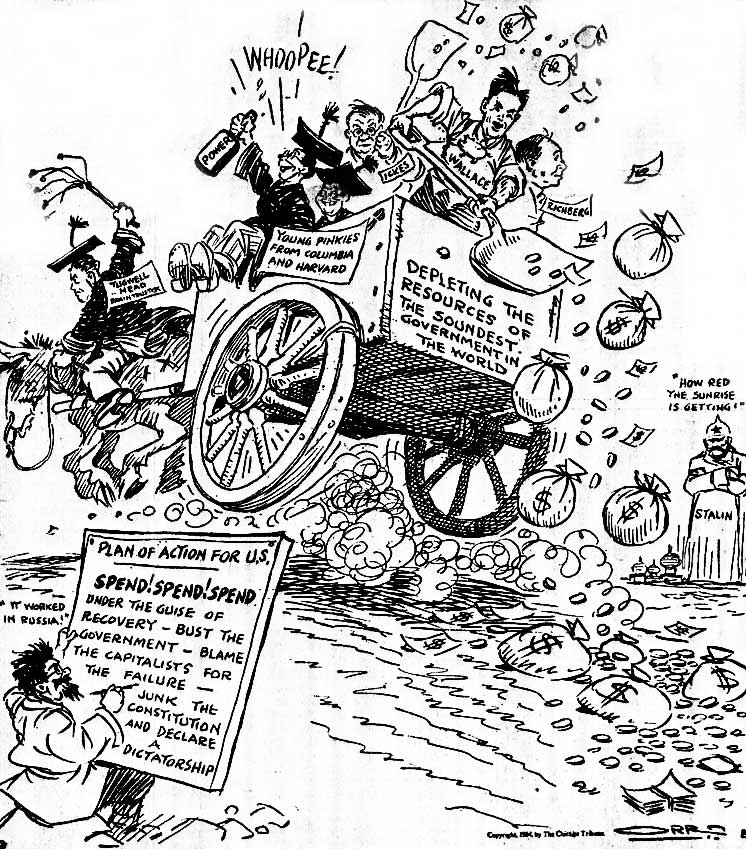Skip to comments.
Things to Look For…
The Last Refuge ^
| January 8, 2022
| sundance
Posted on 01/09/2022 12:49:32 PM PST by Bratch
Things that seem disconnected but aren’t. The thirteen bullet points below are the issues we will first notice as the general food supply chain begins show signs of vulnerability. This outline explains why it is happening and how long it can be expected.
In the previous October, November and December warnings we emphasized preparation and counted down the 90-day window. Now, as we enter the final two weeks before mid/late January, the date of our original prediction, it appears that some media are starting to catch up and the larger public is starting to notice.
[NOTE: We nailed the timeline almost to the week]
Feel free to note in the comments section what is happening in your area. Hopefully, most of us are much better positioned than the average person who has not been following this as closely over the past several months.

Initial food instability signs in the supply chain.
Things to look for:
(1) A shortage of processed potatoes (frozen specifically).
- And/Or a shortage of the ancillary products that are derivates of, or normally include, potatoes.
(2) A larger than usual footprint of turkey in the supermarket (last line of protein).
(3) A noticeable increase in the price of citrus products.
(4) A sparse distribution of foodstuffs that rely on flavorings.
(5) The absence of non-seasonal products.
(6) Little to no price difference on the organic comparable (diff supply chain)
(7) Unusual country of origin for fresh product type.
(8) Absence of large container products
(9) Shortage of any ordinary but specific grain derivative item (ex. wheat crackers)
(10) Big brand shortage.
(11) Shortage of wet pet foods
(12) Shortage of complex blended products with multiple ingredients (soups etc)
(13) A consistent shortage of milk products and/or ancillaries.
These notes above are all precursors that show significant stress in the supply chain. Once these issues are consistently visible, we are going to descend into food instability very quickly, sector by sector, category by category.
At first, each retail operation will show varying degrees of the supply chain stress according to their size, purchasing power, and/or private manufacturing, transportation and distribution capacity.
♦ BACKGROUND – Do you remember, the dairy farmers in 2020 dumping their milk because the commercial side of milk demand (schools, restaurants, bag milk purchasers) was forcibly locked down? Plastic jugs were in short supply, and the processing side of the equation has a limited amount of operational capacity.
Potato farmers and fresh food suppliers were also told to dump, blade or plough-over their crops due to lack of commercial side demand. These issues have longer term consequences than many would understand. These are fresh crops, replenishment crops, which require time before harvest and production.
The retail consumer supply chain for manufactured and processed food products includes bulk storage to compensate for seasonality. As Agriculture Secretary Sonny Perdue noted in 2020, “There are over 800 commercial and public warehouses in the continental 48 states that store frozen products.”
Here is a snapshot of the food we had in storage at the end of February 2020:
- over 302 million pounds of frozen butter;
- 1.36 billion pounds of frozen cheese;
- 925 million pounds of frozen chicken;
- over 1 billion pounds of frozen fruit;
- nearly 2.04 billion pounds of frozen vegetables;
- 491 million pounds of frozen beef; and nearly 662 million pounds of frozen pork.
This bulk food storage is how the total U.S. consumer food supply ensures consistent availability even with weather impacts. As a nation, we essentially stay one harvest ahead of demand by storing it and smoothing out any peak/valley shortfalls. There are a total of 175,642 commercial facilities involved in this supply chain across the country
The stored food supply is the originating resource for food manufacturers who process the ingredients into a variety of branded food products and distribute to your local supermarket. That bulk stored food, and the subsequent supply chain, is entirely separate from the fresh food supply chain used by restaurants, hotels, cafeterias etc.

Look carefully at the graphic. See the fork in the supply chain that separates “food at home (40%)” from “food away from home (60%)”?
Food ‘outside the home’ includes restaurants, fast food locales, schools, corporate cafeterias, university lunchrooms, manufacturing cafeterias, hotels, food trucks, park and amusement food sellers and many more. Many of those venues are not thought about when people evaluate the overall U.S. food delivery system; however, this network was approximately 60 percent of all food consumption on a daily basis.
The ‘food away from home‘ sector has its own supply chain. Very few restaurants and venues (cited above) purchase food products from retail grocery outlets. As a result of the coronavirus mitigation effort, the ‘food away from home’ sector was reduced by 75% of daily food delivery operations. However, people still needed to eat. That meant retail food outlets, grocers, saw sales increases of 25 to 50 percent, depending on the area.
Covid regulations destroyed this complex supply chain in 2020. It takes time to recover because the replenishment is based on harvest cycles. This stuff must be grown.
When the food at home sector was forced to take on the majority of food delivery, they immediately hit processing constraints. The processing side of the supply chain to funnel food into suppliers for the grocery store has “x” amount of capacity. That system cannot (not feasible) and did not expand to meet the 20 to 50% increase in demand.
Think about potatoes. A potato farmer sells into one of the two paths “food at home” (retail stores, or a processing supplier) or “food away from home” (commercial food or commercial food processors). Other than bulk raw potatoes, the harvest goes into: (1) processing or (2) storage.
(1a) processing for retail sales (40%), ex. Ore Ida frozen potatoes, canning, or any of the other thousand retail products that use potatoes, whole or mashed.
(1b) processing for commercial sales (60%), ex. McDonalds french fries, or any of the thousand restaurant, lunchroom and cafeteria needs that use potatoes, whole or mashed.
♦ Processing – When 1b was shut down in 2020, 1a quickly reached maximum retail processing capacity. Massive multi-million machines and food processing systems have a capacity. The supplies they use also have a capacity: plastic bags, cardboard, trays, bowls, etc. The 1a processing system can only generate “X” amount of retail product at maximum capacity.
The remaining 1b commercial product was shut down. A massive percentage of 1b (commercial) potatoes have nowhere to go, except waste.
♦ Storage – Each processor in 1a stores product (deep cold or frozen storage) for 365-day processing and distribution. Those storage facilities have a limited amount of capacity. The 1b customers need fresh product for the majority of their outlets. Ergo storing for 1b customers who might eventually be allowed to open later only works for a short period of time. The fresh potato sales missed by 1b outlets = the 1b discard by potato farmers.
When you restart 1b suddenly the 1b short-term (fresh) storage product is quickly depleted. Refilling that 2020 storage is dependent on a new 2021 harvest, which simultaneously has a greater immediate demand because the supply chain on the processing side was boxcar’d (over capacity) and then reset to a higher capacity playing catchup.
The amount missing from 2021 storage, because it was used instead of saved, is essentially equal to the amount that was wasted in 2020.
Now you end 2021 will less reserves because storage is depleted, because a greater percentage of the current harvest was immediately used. You enter into the beginning of 2022 (winter) in a race to try and spread out the stored potatoes as you cross your fingers and race against the clock for the next harvest before running out.
You probably noticed – but attached to this issue is yet another motive to keep people (employees) away from large industrial cafeterias and even students from school lunchrooms. The total food supply chain needs time, and harvests, to catch up.
In the example above you can replace *potato* with just about any row crop or retail/commercial food commodity like milk.
The reason I list the shortage of potatoes as the #1 precursor is because every food outlet sells a potato in some form. Every supermarket and every single restaurant (fancy, sit down or fast food) sells some form of potato. Potatoes are demanded by every single food outlet; therefore, a shortage of potatoes is the first noticeable issue.
The 2020 demand disruption problem now becomes a 2021/2022 supply chain problem on both the fresh and processing side (depleted inventories), with each vector now competing for the same raw material: wheat, soybeans, grains, beans and stored row crops.
Making matters worse, the protein suppliers also need grain as feed for cattle, pigs, cows, chickens, etc.
[Note: who gets the short straw? The pet food manufacturers]
That’s the nub of the background supply chain issue in the food sector. Additionally, recovery is not a single-issue problem.
The recovery price and shortages relate to everything from current oil and gas prices to diesel engine oil prices, to fertilizer and weed killer costs, to plastic costs and petroleum packing shortages (Styrofoam especially), to cardboard and sustainable packaging costs, to energy costs and transportation/delivery costs. All along this complex supply chain there’s also workers and higher payroll costs.
Thus, we get the double-edged sword of higher prices (inflation) and simultaneous shortages.
Here’s what you can do to offset grocery store shortages (while possible):
(1) Buy the generic or store brand equivalent (sub-set inside retail supply chain)
(2) Purchase the organic version (another sub-set inside retail supply chain)
(3) Purchase the powered/dehydrated version (potatoes, milk, etc) and experiment (jazz it up).
Each retail operation, or chain of stores, will show varying degrees of the supply chain stress according to their size, purchasing power, and/or private manufacturing, transportation and distribution capacity.
This is where field to fork supplier relationships can make a big difference. However, every outlet regardless of their operational excellence, is going to have significant shortages in their inventory. It’s an unavoidable outcome of the previous chaos.
On average the retail shortages will last for about as long as one full harvest schedule (4 to 6 months) depending on the commodity. By September of 2022 the various sector should be relatively recovered.
However, government intervention could make the issues worse, or the recovery time take longer, depending on how they respond when people get seriously stressed in a few weeks. The densely populated urban areas are going to be making a lot of noise and demanding the government fix the crisis.
Final note on INFLATION – The short-term prices will go up again, another 10, 20 up to 50% should be expected depending on the item. Those prices will eventually level off, but it’s doubtful they will be able to come back down until supply and demand find some equilibrium again, if ever. Right now, predicting future retail prices is too far off to even fathom.
I hope this outline provides you with information to help you make decisions for your family.

TOPICS: Business/Economy; Crime/Corruption; News/Current Events; Politics/Elections
KEYWORDS: bloggers; cannedgoods; food; foodshortage; frozenfoods; funpantsblog; groceries; inflation; peehouse; prepper; preppers; supply; supplychain; trade
Navigation: use the links below to view more comments.
first 1-20, 21-40, 41-49 next last
1
posted on
01/09/2022 12:49:32 PM PST
by
Bratch
To: Bratch; Tilted Irish Kilt; null and void; Roman_War_Criminal; Diana in Wisconsin; Pollard
2
posted on
01/09/2022 12:52:06 PM PST
by
metmom
(...fixing our eyes on Jesus, the Author and Perfecter of our faith….)
To: Bratch
We’re already there. Local grocers are often out of dairy products such as sour cream and regular yogurt. Canned pet foods are rationed and often out of stock. Organic produce is actually cheaper than the packaged stuff in many cases. This is kind of freaking me out.
3
posted on
01/09/2022 12:52:09 PM PST
by
rarestia
(“A nation which can prefer disgrace to danger is prepared for a master, and deserves one.” -Hamilton)
To: Bratch; EinNYC
4
posted on
01/09/2022 12:55:19 PM PST
by
metmom
(...fixing our eyes on Jesus, the Author and Perfecter of our faith….)
To: Bratch
5
posted on
01/09/2022 12:56:31 PM PST
by
laplata
To: rarestia
6
posted on
01/09/2022 12:58:33 PM PST
by
Pollard
(PureBlood -- youtube.com/watch?v=VXm0fkDituE)
To: Bratch
To: Bratch
The Wal-Mart here has been terrible at staying stocked. I’ve been going to local grocery stores to get stuff. More expensive, but at least they have what I want. The one thing I see consistently on shortage is meat. The price of steaks is sky high. Other cuts have gone up, but not as much.
8
posted on
01/09/2022 1:17:39 PM PST
by
virgil
(The evil that men do lives after them )
To: Bratch
Several of the comments, at link, are saying cream cheese is no where to be found.
We stocked up, before Christmas, and I just checked our area Sams and Costco....they seem to be fully stocked.
9
posted on
01/09/2022 1:18:35 PM PST
by
Jane Long
(What we were told was a “conspiracy theory” in 2020 is now fact. 🙏🏻 Ps 33:12 )
To: metmom
The frozen potato section at our local mega-mart was over half empty last week.
L
10
posted on
01/09/2022 1:19:59 PM PST
by
Lurker
(Peaceful coexistence with the Left is not possible. Stop pretending that it is. )
To: rarestia
“We’re already there. Local grocers are often out of dairy products such as sour cream and regular yogurt. Canned pet foods are rationed and often out of stock. Organic produce is actually cheaper than the packaged stuff in many cases. This is kind of freaking me out.”
+++++
The frozen food section, deli meat section, frozen breakfast items, have all been less than 50 percent full at my local Kroger each time I’ve been shopping over the past couple of months. It is getting scary at this point. Some portions of the shelves are totally empty.
11
posted on
01/09/2022 1:22:18 PM PST
by
CFW
To: Bratch
Last Summer I had to explain to my Masters in Education sister, why the feed lots in her area were shutdown.
I explained these same talking points and things to come. She was clueless.
12
posted on
01/09/2022 1:24:47 PM PST
by
Deaf Smith
(When a Texan takes his chances, chances will be taken that's for sure.)
To: Lurker
Frozen potato and frozen chicken sections were wiped out yesterday at Kroger.
13
posted on
01/09/2022 1:26:32 PM PST
by
ealgeone
To: Bratch
We in rural flyover country never shut down for any length of time. We also have regional brands in our grocery stores. The fast food places remained open but for drive thru only and they kept busy. Small restaurants were shut down for a month or two and then had reduced occupational capacity but within another coupe of months were back to full business. Kids went back to school last Fall. I did see that they were having trouble with getting food but I guess they worked things out.
Things I have noticed.
I eat red grapes and the quality has gone downhill. Pale with no flavor.
Paper product prices have gone sky high.
Meat has gone up as per the graphic above. The exception is bacon which has nearly tripled.
Produce is never on sale though that may change in a month or three.
Only the cheap cuts of beef and ground beef go on sale which merely brings the price down to pre-covid prices
Sausage and other processed meat products are still the same price as pre-covid.
Whole chicken is still cheap but pieces have gone up.
Just noticed this at the bottom of one of our grocery store's online ad.

Another store has no ad this week which is something they did last Spring.
14
posted on
01/09/2022 1:26:36 PM PST
by
Pollard
(PureBlood -- youtube.com/watch?v=VXm0fkDituE)
To: Bratch
Valuable info. Thanks for sharing.
15
posted on
01/09/2022 1:28:55 PM PST
by
unlearner
(Si vis pacem, para bellum. Let him who desires peace prepare for war.)
To: AdmSmith; AnonymousConservative; Arthur Wildfire! March; Berosus; Bockscar; cardinal4; ColdOne; ...
Brainless Joe read the speech, and now the cadre that has put him where he is will get rid of him, and blame it on Trump supporters. The remedy will be measures claimed to be for public safety -- illegal banning of candidacies, illegal shutdown of the society, and then promises that everyone will be issued food coupons, but yours won't arrive, because you will be starved to death, and the Partisan Media Shills will either not cover it, or "fact check" it with denials.
16
posted on
01/09/2022 1:29:28 PM PST
by
SunkenCiv
(Imagine an imaginary menagerie manager imagining managing an imaginary menagerie.)
To: Pollard
Rural west Florida, north of the Tampa area.
17
posted on
01/09/2022 1:29:39 PM PST
by
rarestia
(“A nation which can prefer disgrace to danger is prepared for a master, and deserves one.” -Hamilton)
To: metmom
Put me on your list pls.
thx, ‘Pod.
18
posted on
01/09/2022 1:37:46 PM PST
by
sauropod
(Resident Bidet. A confused old man at the wrong bus stop.)
To: ealgeone
We don’t buy much frozen stuff but we do like the Potatoes O’Brien mix. Meat we try to buy as primals and cut it ourselves. Then it gets vacuum sealed and into the deep freezer. Much cheaper that way.
But it looks like it’s time to top that off.
Better to have it. We will eat it eventually.
L
19
posted on
01/09/2022 1:38:00 PM PST
by
Lurker
(Peaceful coexistence with the Left is not possible. Stop pretending that it is. )
To: rarestia
Got a sister that lived in Citrus near the nuke plant and another that lived in Brooksville.
I lived in Orange/Seminole/Lake counties for 25 years. Kept moving North as things got busier. We’re in Missouri now.
20
posted on
01/09/2022 1:40:23 PM PST
by
Pollard
(PureBlood -- youtube.com/watch?v=VXm0fkDituE)
Navigation: use the links below to view more comments.
first 1-20, 21-40, 41-49 next last
Disclaimer:
Opinions posted on Free Republic are those of the individual
posters and do not necessarily represent the opinion of Free Republic or its
management. All materials posted herein are protected by copyright law and the
exemption for fair use of copyrighted works.
FreeRepublic.com is powered by software copyright 2000-2008 John Robinson





